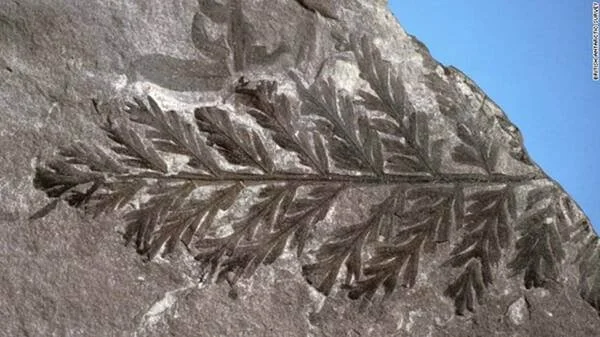Ancient Antarctic Fossil Forest: 280-Million-Year-Old Tree Reveals Earth's Climate Past
A fossilized tree stump discovered in Antarctica offers a rare glimpse into ancient ecosystems, showing how forests once thrived near the South Pole during a warmer climate.
A remarkable discovery was made in Antarctica—a 280-million-year-old tree stump still rooted in place. This finding sheds light on a time when the frozen continent was lush and forested, a far cry from the icy wilderness it is today. The tree's fossilized remains offer us a rare glimpse into Earth's ancient ecosystems and how they thrived before the planet underwent dramatic environmental changes.
While we now associate Antarctica with ice, it wasn't always this way. Millions of years ago, Antarctica was part of a supercontinent called Gondwana, which spanned much of the Southern Hemisphere. During that time, this region, including parts near the South Pole, was home to vast forests of towering trees. One of these ancient trees, a member of the now-extinct Glossopteris genus, has been unearthed, offering fresh insights into how these plants lived, grew, and propagated during a warmer period in Earth’s history.
This fossilized tree also provides crucial clues about how forests responded to climate shifts, making it a vital discovery for understanding both the past and potential future impacts of climate change.
The Glossopteris Tree and its Role in Prehistoric Ecosystems
The tree discovered in the Transantarctic Mountains is a fossilized example of the Glossopteris, a genus that once dominated the southern polar forests during the Permian period, around 280 million years ago. These trees were widespread across Gondwana, growing even in areas close to the South Pole, a region where, today, life struggles to exist. However, at the time, the climate was significantly warmer, allowing forests to thrive in these regions. The Glossopteris trees were massive, reaching heights of 60 to 130 feet, with leaves longer than a human forearm.
The Glossopteris trees grew during the Permian-Triassic era, a period marked by one of the most catastrophic extinction events in Earth’s history. Approximately 95% of all species on the planet died in what is known as the end-Permian mass extinction. This event was triggered by massive volcanic activity, which released enormous amounts of greenhouse gases into the atmosphere, dramatically increasing global temperatures and causing the oceans to become highly acidic. As the climate shifted, these once-thriving forests were wiped out, and the trees that once stood tall were buried under volcanic ash, preserved for millions of years.
This particular tree was rapidly entombed by volcanic ash, preserving it in exceptional detail, even down to its cellular structure. Some of the organic compounds, including amino acids, which are the building blocks of proteins, have also been preserved. This rare level of preservation offers scientists an opportunity to study these ancient trees at a molecular level, revealing how they adapted to the extreme conditions near the South Pole during the Permian period.
Implications for Understanding Climate and Mass Extinction Events
The discovery of this fossilized tree not only provides a snapshot of a lost world but also offers critical insights into how Earth's ecosystems respond to dramatic climate shifts. Scientists are particularly interested in studying the amino acids and other organic materials preserved in the fossil, which may help explain how these trees adapted to the unique sunlight conditions in Antarctica, where the sun does not set for months during the summer and does not rise for months during the winter. Understanding how plants like the Glossopteris managed to survive in such an environment could offer clues about how life on Earth might respond to extreme climate changes in the future.
Moreover, the study of these ancient forests could help unravel the mystery of how and why these ecosystems eventually disappeared. While it is clear that volcanic activity and the resulting climate changes played a significant role, the exact mechanisms of how these forests were wiped out remain unclear. By studying fossils like the one found in the Transantarctic Mountains, scientists hope to better understand the environmental conditions that led to the mass extinction event at the end of the Permian period.
This discovery also serves as a reminder of how dramatically Earth's climate has changed over time. Antarctica, a land now covered in ice, was once home to vibrant forests, a stark contrast to its present-day state. The fossils of these ancient trees remind us that the planet's environment is constantly evolving, often in ways that are difficult to predict.
Conclusion: A Glimpse into Earth's Ancient Past
The unearthing of this 280-million-year-old fossilized tree stump in Antarctica offers a rare and fascinating glimpse into Earth's distant past. Once part of a thriving forest near the South Pole, this tree tells the story of a time when the planet was much warmer, and life flourished in regions that are now inhospitable.
The preservation of the Glossopteris tree, with its cellular structures and even some of its original organic compounds intact, provides scientists with an extraordinary opportunity to study how ancient ecosystems functioned and how they were impacted by environmental changes. As researchers continue to analyze this fossil and others like it, they will gain valuable insights into the processes that led to one of the greatest extinction events in Earth's history and how life on our planet adapts to changing climates.
Ultimately, the discovery serves as a powerful reminder of the fragility and resilience of life on Earth and the importance of understanding our planet's past to better prepare for its future.



